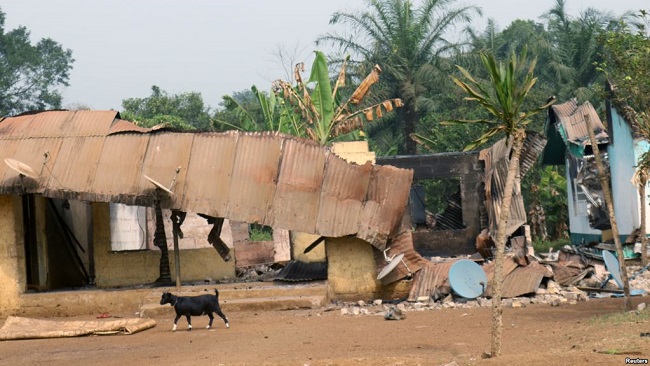UN Emergency Response Plan and Overview of the crisis in Southern Cameroons
The crisis in the South-West and North-West Regions of Cameroon has compounded pre-existing vulnerabilities. Since 2016, political and social instability, exacerbated by sporadic violence, has had a negative impact on the civilian population of Cameroon’s South-West and NorthWest Regions, hosting four million inhabitants (16% of the total population). In November 2017, the sociopolitical crisis progressively translated into insecurity and armed violence. Since then, the escalation of tension and upsurge in hostilities between non-state armed groups and defence and security forces have triggered humanitarian needs across the two regions, linked to significant internal displacement.
In recent months, the epicentre of the crisis moved from Bamenda (North-West) to Mamfe and Kumba (SouthWest). All divisions in the South-West region, host to more than 1.4 million inhabitants, are affected by the crisis.
The number of households forced to flee their villages – or the country – in search of safer areas has rapidly and steadily increased since November 2017. Recent needs assessments report that at least 160,000 people have been internally displaced in the two affected regions and would need humanitarian and protection assistance over the next three months. In addition, more than 21,000 Cameroonians have been registered as refugees in Cross River, Benue and Akwa Ibom States in Nigeria.1 This crisis is taking place against a backdrop of several other humanitarian emergencies affecting 3.3 million people across Cameroon.
Most affected areas
The South-West Region has become the hub of the crisis as it is home to more than 90% of the 160,000 internally displaced persons (IDPs) in need of humanitarian assistance; 135,000 are located in Meme Division and 15,000 in Manyu Division. The remaining 10,000 are displaced in the North-West Region.
Simultaneously, dozens of villages in Mbongue and Konye Subdivision (Meme Division) have been emptied of their populations. The situation is similar in the NorthWest, especially in Boyo Division.
Many villages have suffered significant material damage in Mbongue and Konye Subdivision (Meme Division), and in Eyumodjok and Akwaya Subdivision (Manyu Division). 1 This Response Plan does not include the need of Cameroonian refugees who found refuge in Nigeria Recently, insecurity has spread to new divisions in the South-West (Ndian, Lebialem, Fako) and North-West (Boyo).
Who are the most vulnerable?
Clashes between non-state armed groups and defense and security forces have displaced the civilian population into the surrounding forests and villages – 80% of the displaced population have found refuge in the forest.
The two regions has experienced a deterioration of living conditions – primarily affecting school-age children, women and the elderly – and a collapse of livelihoods as well as heightened abuses.
The crisis and subsequent displacement have prevented people from accessing their fields and markets. For most of the affected population who relied upon agriculture or livestock as their main sources of livelihoods before the crisis, dependency on external assistance will be inevitable in the short-term.





